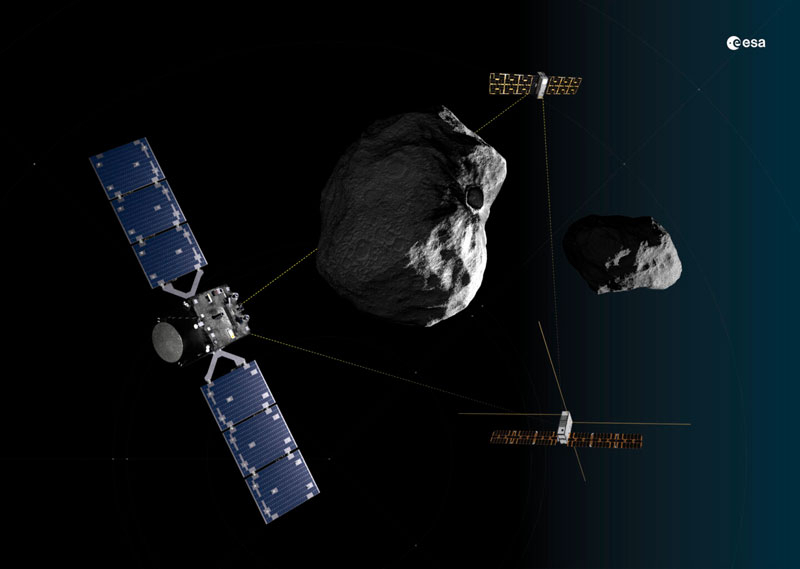The European Space Agency reported that on November 6, the Hera interplanetary station ignited three engines for 13 minutes to enter a predetermined flight path to Mars, which it will reach in March 2025. The engine launch became the second in the trajectory correction cycle. On October 23, the engines were turned on for 100 minutes. The third and very short engine start is expected on November 21, which should be the final touch of the maneuver.

Hera station and two cubesats in its kit in an asteroid system. Image source: ESA
According to ESA, the combined firing of the engines gave the station an additional acceleration of 166 m/s. The launch of the engines on November 21 will add a few more centimeters per second to this. The first two burns are now being assessed in order to accurately determine the time of the third and last engine burn at this stage of the flight. So far, everything looks good, the agency notes.
In March 2025, “Hera” will fly up to Mars so that it, with its gravity, will correct the station’s flight path. In the process of flying around Mars, the station will pass its satellite – Deimos, to which it will apply the full power of on-board scientific equipment, and these are radars and spectrometers. It looks like this will make it possible to obtain the most complete data on Deimos in the history of astronautics.
The true purpose of Hera’s journey is to arrive at the system of the double asteroids Didymos and Dimorphus. In September 2022, NASA’s DART kamikaze probe struck the smaller one, Dimorph, changing the asteroid’s orbit. This was a kind of field test to change the trajectories of asteroids dangerous to the Earth. The Hera station must collect data on the impact of the probe on the asteroid and the most complete information on the asteroids themselves in order to refine computer models of impact on asteroids. The station’s arrival at the asteroid system is expected in September 2026.